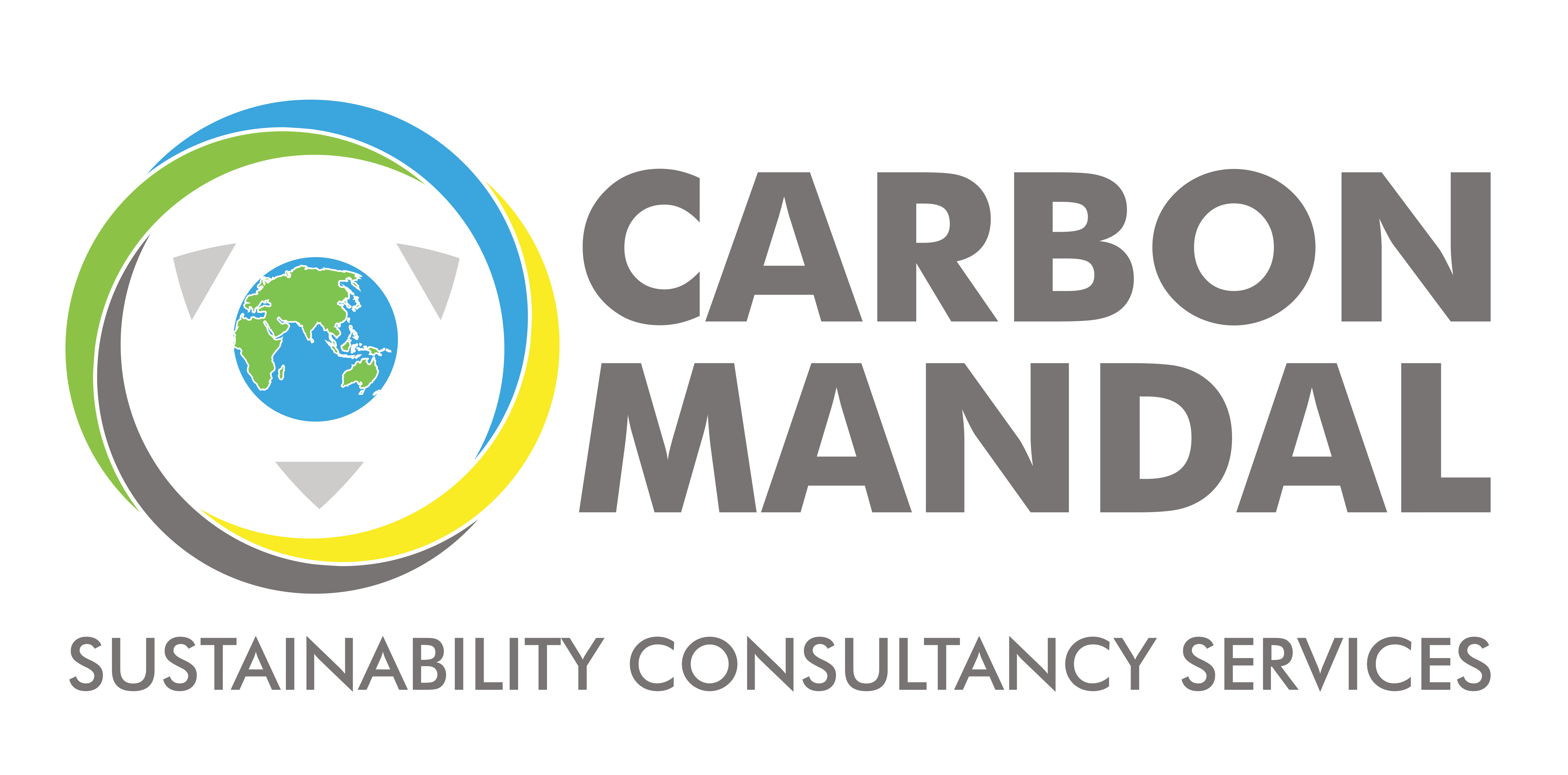Taking a look at the carbon market in India and its expected future
Climate change is undeniably one of the biggest threats we face today, and combating it requires innovative solutions. Enter the carbon market – an intriguing concept that has gained momentum worldwide. The carbon market is a system where businesses and governments buy and sell credits for emitting greenhouse gases. The market sets a price for carbon, which creates an incentive to reduce emissions.
Carbon markets can either be compliant or voluntary. Compliance markets are formally governed by laws at the national, regional, and/or worldwide levels. Today’s compliance markets primarily follow a concept known as “cap-and-trade” [6]. Whereas, in voluntary carbon markets emitters like businesses, people, and others purchase carbon credits to compensate for the release of one tonne of CO2 or similar greenhouse gases. These carbon credits are produced through actions that remove CO2 from the atmosphere, like reforestation [6].
International carbon markets can be crucial in achieving cost-effective global greenhouse gas emission reductions. The number of emissions trading systems is rising globally. The United States, Canada, China, Japan, New Zealand, South Korea, and the EU ETS are just a few of the countries that have national or subnational systems running or in the works [4]. The market for carbon rose 13.5% in 2022, reaching a new high of 865 billion euros. This expansion was primarily brought on by an uptick in the demand for carbon permits, which resulted in skyrocketing costs [2]. Based on revenue, the European Union Emission Trading System is the largest carbon market; in 2022, it represented over 87% of the total market size.
In India, with its booming economy and increasing greenhouse gas emissions, how would the carbon market play a role in combating climate change? In this blog, we delve into the potential of India’s carbon market, exploring its promises and future in order to meet the sustainable goals of India.
India’s Carbon Market – Carbon Credit Trading Scheme
The carbon market in India is still in its early stages of development, but it holds great promise for climate action. The market allows businesses and individuals to offset their emissions by investing in projects that reduce greenhouse gas emissions. In return, they receive carbon credits that can be used to offset their own emissions or traded on the open market. India has issued 35.94 million carbon credits between 2010 and 2022 and has also traded these credits on overseas markets [5].
The Government of India has been taking steps to establish a carbon market in the country.
The most recent update was, in 2023, when the union government sanctioned the establishment of the first domestically regulated carbon market in India [1]. The goal of the Indian government’s development of the Indian Carbon Market (ICM), which would establish a national framework, is to decarbonize the Indian economy by pricing Greenhouse Gas (GHG) emissions through the trade of Carbon Credit Certificates [3]. The Carbon Credit Trading Scheme is being developed for this purpose by the Ministry of Power’s Bureau of Energy Efficiency in collaboration with the Ministry of Environment, Forestry, and Climate Change. The plan calls for the establishment of a “National Steering Committee,” a technical committee, an accredited carbon verification agency, and the Central Electricity Regulatory Commission (CERC), which will act as the market regulator for carbon emissions [1]. By 2025 it is anticipated that Renewable Energy Certificates (REC) and Energy Savings Certificates (ESC) will be traded, and by 2026 these will be changed to Carbon Credit Certificates.
Through the creation of a domestic registry and integration with power markets, the recently announced carbon credit trading plan would usher in a new era to restore the trading of emissions, CMAI (Carbon Market Association Of India) President Manish Dabkara, Chairman and MD of EKI Energy Services, states that “Taking a cue from its Paris Agreement commitment and chasing its NetZero goal, Government of India in consultation with the Bureau has released the Carbon Credit Trading Scheme (CCTS) for the institutionalisation and functioning of the Indian Carbon Market (ICM). It involves a process for compliance in which emission objectives will be established for specific industries and organisations, surpassing which they will receive credit certificates” [7].
The energy transformation initiatives will be strengthened by the new avatar Carbon Credit Trading Scheme, which will broaden their scope to include India’s potential energy sectors. In order to meet the climate goals, GHG intensity benchmarks and targets will be created for these sectors and will be in line with India’s emissions trajectory [3]. Based on how well these sectoral trajectories are doing, carbon credits will be traded. Additionally, it is anticipated that a voluntary system will be developed concurrently to stimulate GHG reduction from non-obligated industries. Through the purchase of emission credits by both public and private enterprises, the ICM will activate new mitigation alternatives.
However, the notification did not list the activities that would qualify under the carbon trading plan. “The Ministry of Power will advise notifying the Ministry of Environment, Forestry and Climate Change (MoEFCC) of greenhouse gas emission intensity targets. The accountable parties are required to reach the targets for greenhouse gas emission intensity. The announcement stated that the obligated companies “shall also be required to get any other targets, such as usage of non-fossil energy or specific energy consumption, as may be declared by the Ministry of Power under the Act as amended from time to time [1].
The Future of the Carbon Market in India
Industry insiders predicted that the $2 billion voluntary carbon credit market in India may grow to $200 billion by 2030 [1]. India is one of the biggest exporters of carbon credits, yet it lacks its own carbon market. Although there are a few carbon offsetting sites that offer carbon credits, there isn’t yet a market that is regulated [1].
In the past decade, there have been many carbon market initiatives launched in India. It is difficult to predict the future of any given market, and this is especially true for nascent markets like carbon. There are a number of factors that could affect the future development of the carbon market in India, including political stability and economic growth.
Political stability is an essential factor to consider when predicting the future of any market. Political turmoils will make it difficult for businesses to operate and thus create uncertainty about the policy environment. Such situations could hamper the development of the carbon market in India.
Economic growth is another important factor to consider when predicting the future of a market. A growing economy usually leads to increased demand for commodities, including carbon credits. With India’s growing economy and a larger number of businesses coming up, the demand for carbon credits could potentially increase.
India’s transition to a low-carbon economy
The benefits of having a carbon market in India are many. For one, it would create incentives for businesses to invest in green technologies and practices that lower their emissions. It would give Indian businesses a way to offset their emissions if they are unable to reduce them enough on their own. There will be challenges that India could face when it comes to the regulation of this carbon market and tackling these issues would take solid and structured guidelines.
A carbon market would send a strong signal to the international community that India is serious about tackling climate change. This could attract more foreign investment and help India transition to a low-carbon economy.
References
- Standard, B. (2023). Centre approves formation of India’s first domestic regulated carbon market. https://www.business-standard.com/economy/news/centre-approves-formation-of-india-s-first-domestic-regulated-carbon-market-123063000813_1.html. Accessed July 10th 2023
- Ian Tiseo, & 10, J. (2023, July 10). Global Carbon Market Size 2022. Statista. https://www.statista.com/statistics/1334848/global-carbon-market-size-value/#:~:text=The%20value%20of%20the%20global,which%20culminated%20in%20surging%20prices. Accessed July 14th 2023
- Ministry of Power & Ministry of Environment, forests & climate change to develop Carbon Credit Trading Scheme for decarbonisation. Press Information Bureau. https://pib.gov.in/PressReleasePage.aspx?PRID=1923458. Accessed July 10th 2023
- International Carbon Market. Climate Action. https://climate.ec.europa.eu/eu-action/eu-emissions-trading-system-eu-ets/international-carbon-market_en. Accessed July 14th 2023
- www.ETEnergyworld.com. (2023, March 28). Carbon credit: Understanding the concept, its evolution and implications – ET energyworld. ETEnergyworld.com. https://energy.economictimes.indiatimes.com/news/renewable/carbon-credit-understanding-the-concept-its-evolution-and-implications/99064759. Accessed July 14th 2023
- Munjal, D. (2023, January 26). Explained: What are carbon markets and how do they operate? https://www.thehindu.com/news/national/explained-what-are-carbon-markets-and-how-do-they-operate/article66260084.ece. Accessed July 14th 2023
- Business Today. (2023, July 3). Govt finalises scheme for Indian Carbon Market, Steering Committee to be formed. https://www.businesstoday.in/latest/economy/story/govt-finalises-scheme-for-indian-carbon-market-steering-committee-to-be-formed-388004-2023-07-03. Accessed July 16th 2023

